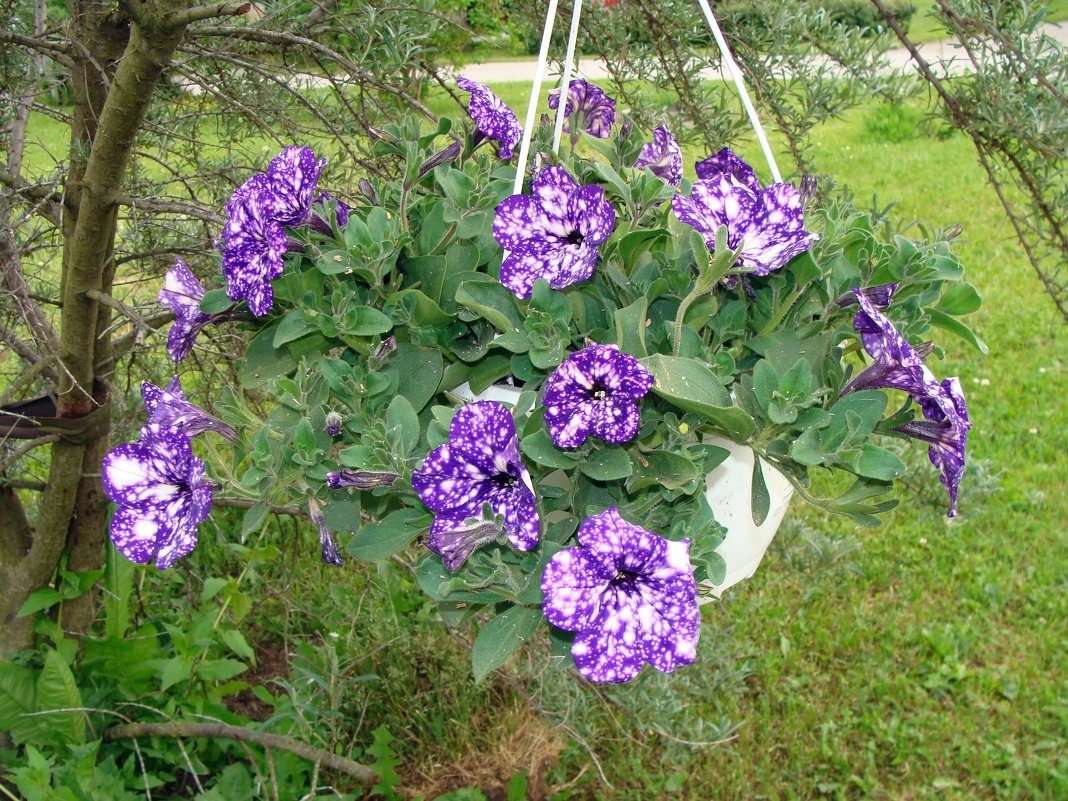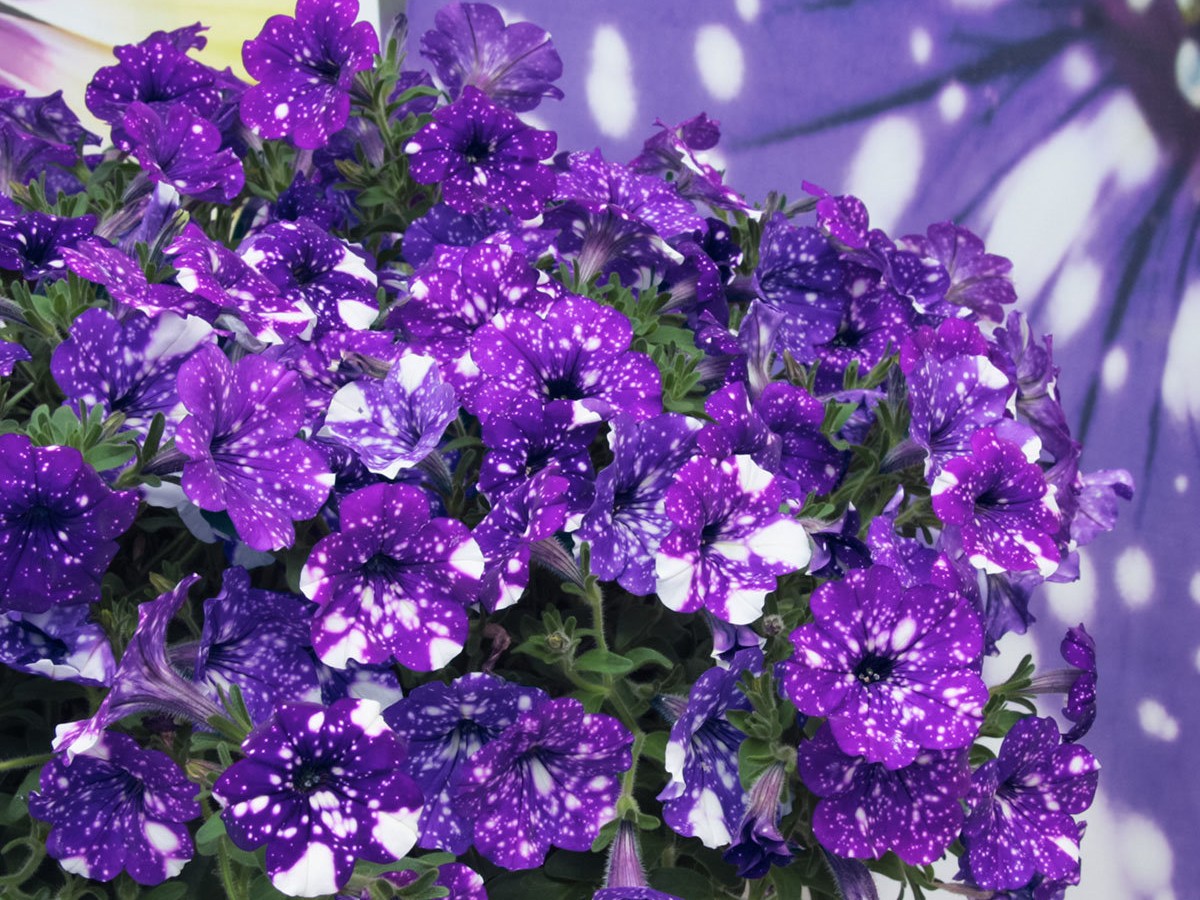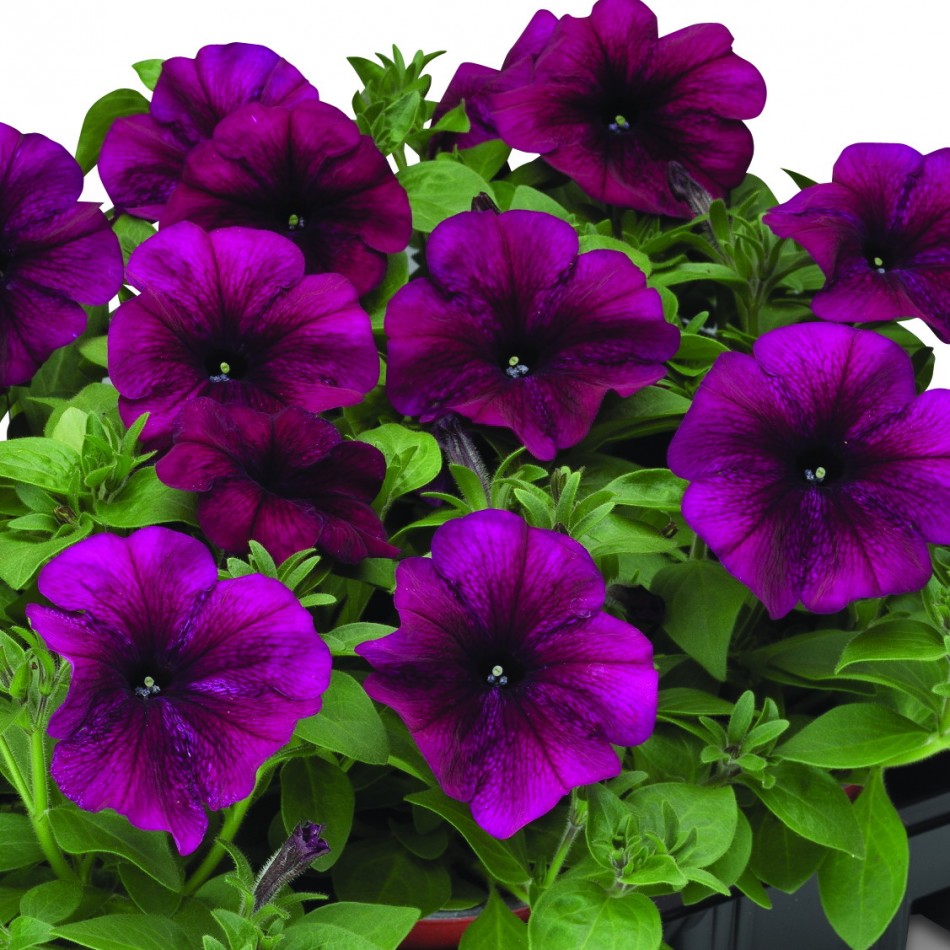Petunia is a beautiful flower that exudes a delicate honey scent. Very often they are used in the design of decorative landscapes in gardens, summer cottages and city parks. With this option, there is a large number due to the huge number of varieties of petunias.
Today we will tell you how you can use it to arrange a flower bed in the garden and not only, as well as with what other petunia plants can be combined. Some examples contain photos so you can see the examples firsthand.
Content
Features of petunia
Few people know that petunia belongs to the category of nightshade plants, and potatoes also belong to them. Long time petunia grew like a wild plant and had no decorative effect, and only in the 19th century it was noticed by breeders who made hybrid decorative varieties on its basis.
There are more and more of them every year, gardeners love both old and new types of petunias. The most popular for growing in gardens are ampel varieties of petunias. In the photo you can see how they look, their description is as follows:
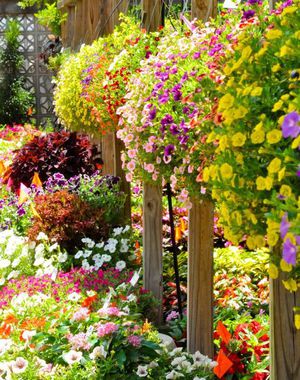 long shoots, lowered to the ground;
long shoots, lowered to the ground;- on the shoots there are flowers with a diameter of about 5 cm;
- predominantly petunias have simple funnel-shaped flowers, but there are also double varieties with corrugated or wavy edges of the petals;
- flowers in some varieties resemble stars.
The variety of colors of petunias is striking. So, their flowers are:
- white;
- red;
- purple;
- cream;
- coral.
Due to the presence of a huge number of varieties, many hobbyists often use them to decorate the garden. For instance, arrange beautiful flower beds based on them... In the photo you can see examples of creating such compositions.
How to choose planting material?
 The flower bed in the garden is a well thought out arrangement, where each plant has its place. It is best to plant ready-made seedlings in a flowerbed according to the planned project... But sowing seeds in a flower bed is not always a good solution, since many may not rise and disappear during cultivation, respectively, the design of the garden according to the plan may not work.
The flower bed in the garden is a well thought out arrangement, where each plant has its place. It is best to plant ready-made seedlings in a flowerbed according to the planned project... But sowing seeds in a flower bed is not always a good solution, since many may not rise and disappear during cultivation, respectively, the design of the garden according to the plan may not work.
Petunia seedlings can be grown on their own or purchased ready-made. If there are difficulties with the purchase, then it will not be easy to grow it yourself:
- strictly observe the temperature;
- the humidity level must also be maintained;
- carry out dives and pinching in time.
With independent growing seedlings of petunias the process should start in early spring. In this case seedlings will be ready for transplanting in the ground at the beginning of summer... Also, a flower bed in the garden with the help of petunias can be arranged faster, but it is very expensive: buy large bushes and plant them where you need them.
Selection of place and soil
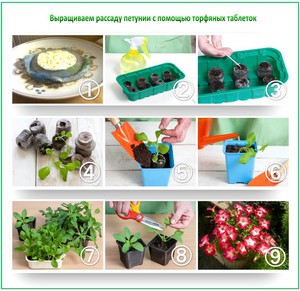 Petunia is very fond of the sun and treats the heat well.Therefore, in the garden for her, you need to choose places in open sunny areas, which are darkened at noon with the help of a young tree, a picket fence or something else. The plant will feel somewhat worse in places with great shading.where the sun breaks through for only half a day, or under the crowns of trees. But a deep shadow for petunias is completely contraindicated, the branches will stretch out, and the flowering will be very weak, as a result of which the flowers will turn pale.
Petunia is very fond of the sun and treats the heat well.Therefore, in the garden for her, you need to choose places in open sunny areas, which are darkened at noon with the help of a young tree, a picket fence or something else. The plant will feel somewhat worse in places with great shading.where the sun breaks through for only half a day, or under the crowns of trees. But a deep shadow for petunias is completely contraindicated, the branches will stretch out, and the flowering will be very weak, as a result of which the flowers will turn pale.
For petunias, choose neutral or fertile soil. Best of all - sandy loam or loamy. But if the soil is heavy and clayey, it will not be very good for the plant: growth and flowering will slow down. The soil can be improved by loosening... To do this, it is dug up and fertile soil from another site or peat soil is added to it. Also, when planting in a hole, you can add a little baking powder, for example:
- perlite;
- vermiculite.
How to plant petunias in the garden
Remember that petunias, especially ampelous ones, tend to grow. They have a developed root system, therefore to create a beautiful flower bed, you do not need to plant densely... This can lead to the struggle of plants for space, as a result of which some will begin to oppress others. In addition, such a planting density can provoke the appearance of powdery mildew and other fungal diseases.
To prevent this from happening, you need to observe the following distances in collective plantings of petunias:
- bush small-flowered specimens should be planted at a distance of about 15–20 cm from each other;
- large-flowered - 20-25 cm, respectively;
- ampelous - by 25-30 cm, respectively.
In some cases, ampelous varieties require even greater distance from each other. For instance, variety "Typhoon" should be planted 40–70 cm from each otherto get a beautiful bloom.
What plants can you combine planting petunias with?
To get a beautiful and attractive garden composition, petunias can be combined with each other according to varieties, or with other plants.
When planting flower beds in gardens, you need to choose such samples that throughout the summer they are able to maintain an attractive appearance and tolerate heat well... Flowers such as:
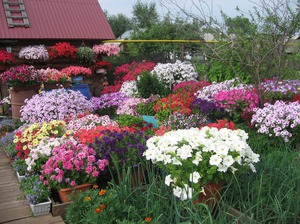 calendula;
calendula;- pelargonium;
- Snapdragon;
- verbena;
- lobularia;
- levkoy;
- marigold;
- ageratum.
And the background of the composition can be stunted deciduous plants:
- cineraria;
- coleus;
- chlorophytum;
- irezine and others.
In the spring, petunias can be combined with bulbous flowers, which dry the leaves for the summer:
- narcissus;
- tulip;
- crocus;
- muscari;
- grouse;
- hyacinth and others.
In case of drought, they should be dug up and replaced with other flowers, or these areas should be temporarily covered with decorative leaves or ground cover plants.
A petunia flower bed under a tree will look even better when decorated with plants such as:
- hosts;
- begonias;
- daylilies;
- decorative cereals.
Petunia flower beds can be planted in containers, then plants can be combined with lobelia, balsam, verbena, viola, pelargonium and other flowers.
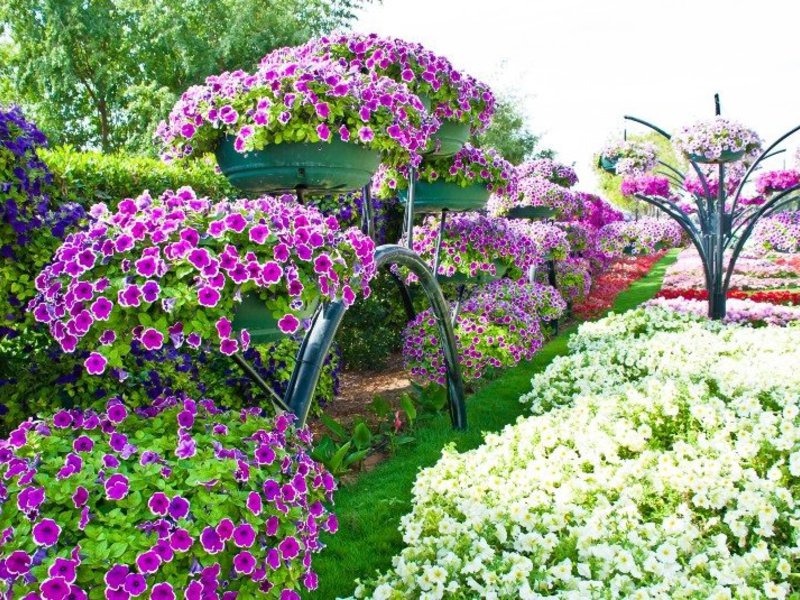
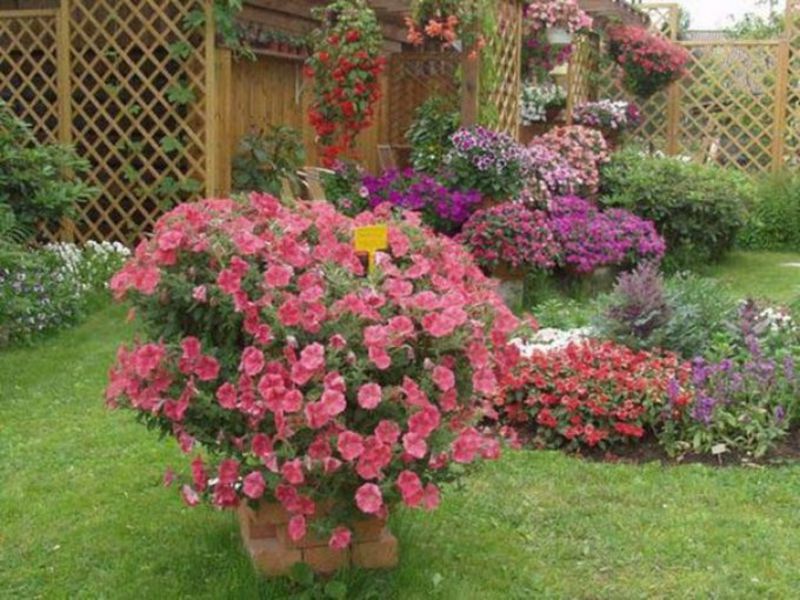
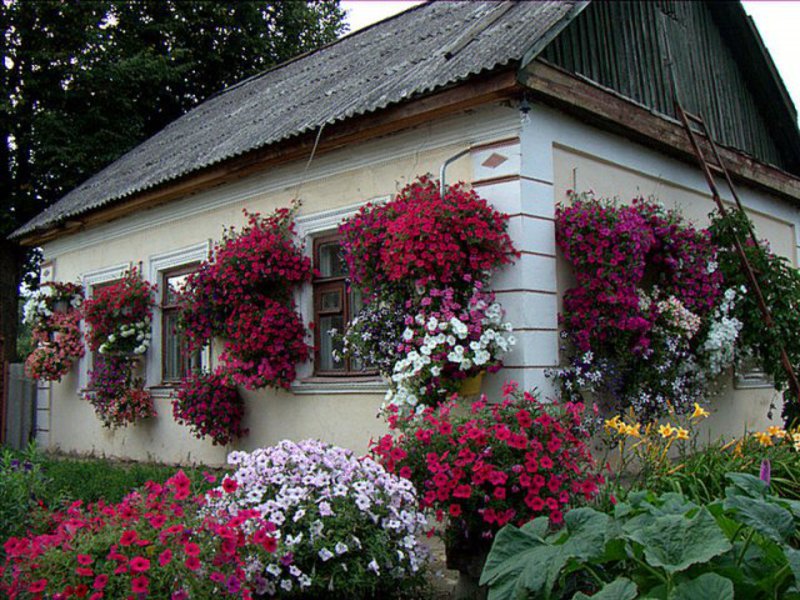
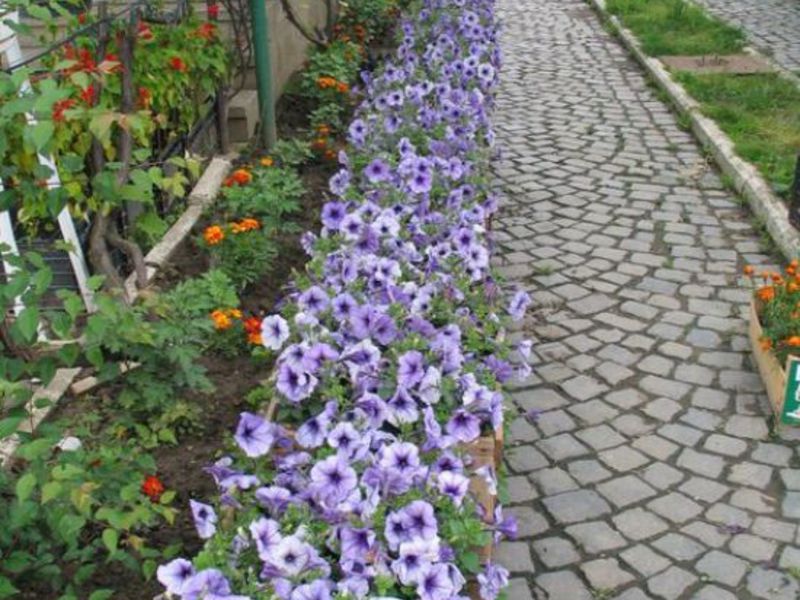
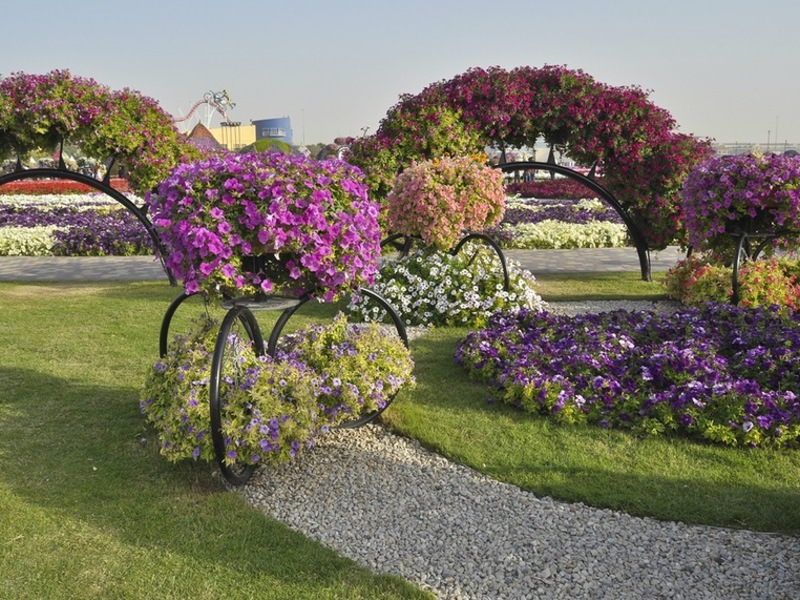
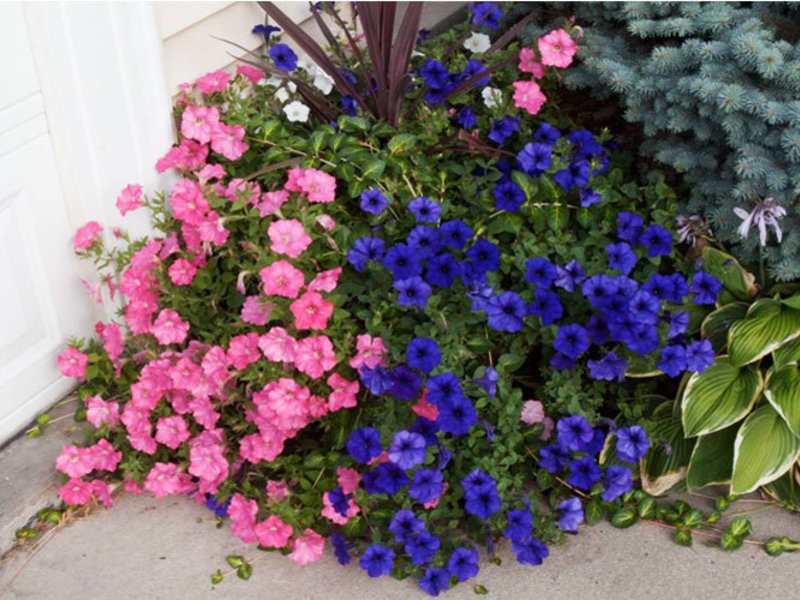
Design options for flower beds
We present to your attention several examples of the design of compositions in gardens based on petunias. You can see some samples in the photo.
Monoclumba
Monoclumba is the simplest composition, yet very attractive. In its strictest version, it means planting petunias of the same variety, such a flower bed will look like a monochrome spot. But if you place petunias of different shapes and shades on it, it, despite its name, will look diverse.
Composition with a coniferous center
The monoclumba can be supplemented with an element such as a coniferous tree in the center, which has a clear geometry. As options:
- thuja;
- juniper;
- cypress.
Raised flower bed
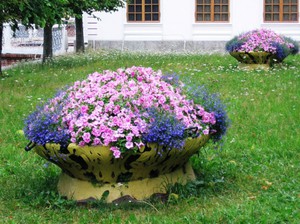 This composition gets its appearance due to the vertical walls. It has no bottom, but petunias are able to develop, as well as in the open field. Ampelous plants are planted inside... The soil for a raised flower bed can be made better depending on the type of flower. To do this, it can be fertilized with such components as:
This composition gets its appearance due to the vertical walls. It has no bottom, but petunias are able to develop, as well as in the open field. Ampelous plants are planted inside... The soil for a raised flower bed can be made better depending on the type of flower. To do this, it can be fertilized with such components as:
- baking powder;
- hydrogel;
- peat;
- biohumus.
Planting pocket or mini-flower bed
Such solutions are suitable for paved courtyards, where there are small planting pockets between the slabs. Large-flowered bush petunia is planted in them, which over time completely covers the earthen gaps... Instead, you can take seedlings of ampel and surfinias, which grow much faster than bush plants and create ground cover color compositions. Small flower beds will decorate the paved area and give new shades to the garden composition as a whole.
Round flower bed
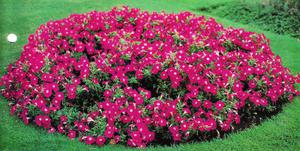 For a round flower bed, take two varieties of purple and dark pink petunias. It turns out bright and is planted in a circle. In the center, you need to place a bush of orange marigolds... As a border, we plant bushes of undersized coleus, which will help keep the shape of the composition.
For a round flower bed, take two varieties of purple and dark pink petunias. It turns out bright and is planted in a circle. In the center, you need to place a bush of orange marigolds... As a border, we plant bushes of undersized coleus, which will help keep the shape of the composition.
The height of the flowerbed plants decreases from the center to the periphery, the composition itself has the shape of a dome and looks slightly raised above the ground.
Vertical flower bed based on petunias
Petunia is a crop that grows well not only in open but also in closed grounds, so they can be grown in pots and containers. Because of this, they can be used to create vertical multi-tiered compositions that are assembled on the basis of different elements.
 A vertical flower bed is made of a wooden screen; containers with flowers are mounted on it vertically. Another variant - creation of a flower tower, which represents planting sections piled on top of each other... And the third way is to create an arched metal frame, which serves as the main one for attaching several large pots with petunias.
A vertical flower bed is made of a wooden screen; containers with flowers are mounted on it vertically. Another variant - creation of a flower tower, which represents planting sections piled on top of each other... And the third way is to create an arched metal frame, which serves as the main one for attaching several large pots with petunias.
For ampelous flower varieties, containers should be as spacious as possible and have drainage holes.
Growing petunias this way is much more difficult than growing in open soil. One of the problems is the limited amount of soil, which is not very good for a plant. For the normal development of a flower, you need at least 2 liters of soil mixture, and for ampelous plants - up to 4 liters, respectively.
How to properly care for a composition
Of course, a beautifully designed composition in the garden based on petunias is far from the end of work on it. Naturally, it requires self-care in order to delight you with its flowering and beauty.
The first thing flowers need is regular watering and feeding. In summer, in the heat, you need to water the flower bed at least once a day. Better either in the morning or in the evening, when the sun is not too hot. At noon, watering is also possible, but only if the composition is shaded... When watering, it is very important that the sun does not scorch the bushes, otherwise the burns will be too noticeable.
Fertilizers for petunias are needed for lush flowering. Here you can use mullein, ash solution and other organic matter, as well as mineral fertilizers. But remember that at the seedling stage, petunias need more nitrogen, and during flowering - phosphorus and potassium. If you plan to use commercial fertilizers, pay attention to the packaging, which indicates the ratio of all macronutrients.
Petunias will become a worthy decoration of a garden or plot, and not only as part of a composition, but also separately. And if you follow the simple rules of care, they will certainly delight you all summer.
